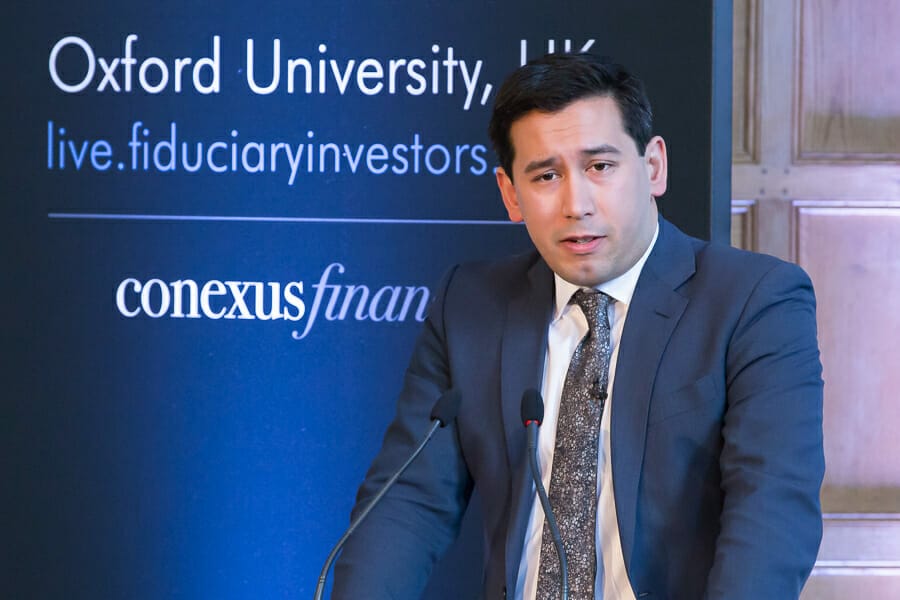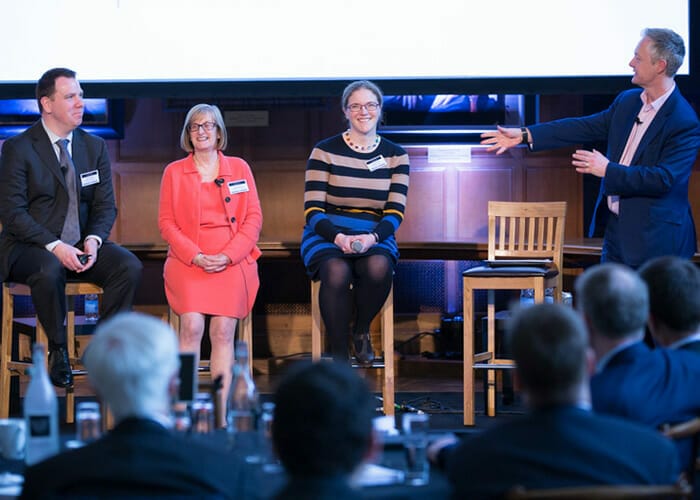Investors need to go much further than carbon footprinting their portfolios to measure environmental risk, a sustainable finance expert has said.
Ben Caldecott, director of the sustainable finance program at the Smith School of Enterprise and the Environment at the University of Oxford, said that although carbon footprinting was the easiest tool to measure exposure to environmental risk, the process didn’t accurately determine exposure because the data was often poor.
“A lot of carbon reporting information used to drive analysis is disclosed inaccurately,” Caldecott said, speaking at the Fiduciary Investors Symposium at Oxford. “Carbon footprinting provides moderately interesting insights but can’t measure everything, and the data is not great.”
Instead, he urged the gathered delegates to ask what environmental risks they want to measure, and what impact they care about as investors. In this bottom-up approach, investors would look at the risk of individual assets, and the exposures to which they could be vulnerable.
“Measure each individual asset against the measure of risk you are interested in,” he said, listing environmental and regulatory risk, changing social norms, resource scarcity and litigation as examples. “In the future, there is a real possibility that fiduciaries will be sued over their management and reporting of climate-related risk. The law is a mirror on society and social norms change rapidly.”
New risk modelling
A new type of modelling should first involve determining how assets would perform in years to come, balanced against the risks to which they are exposed. Then, investors should assess a company’s ability and preparedness to navigate environmental risk. The final step would be “plugging into” valuation risks or economic models. Caldecott used the example of Thailand’s power sector to illustrate how this future risk could be measured within a research model to calculate the future emissions of individual power stations over each asset’s lifetime.
Measuring risk this way was getting easier, he said. The current process began with mapping carbon budgets onto listed fossil fuel reserves back in 2011. Next, experts started looking at individual assets and how they depreciated based on carbon budgets. Today, this has progressed to measuring a whole variety of environmental impacts on an asset and aggregating them.
A rethink for disclosure
Caldecott questioned the current focus on disclosure.
“Disclosure isn’t the answer to the data problem,” he argued. He said many of the details revealed in the disclosure process were not relevant to fundamental analysis of a company. Although disclosure has a role, particularly in asking questions that help companies think about key environmental issues, he argued that a new, ambitious disclosure framework should look at environmental risk through a lens that includes impact. This would provide the data and disclosure that investors need to deploy their capital.
“The focus on disclosure has come at the cost of having an impact,” Caldecott said. “It lulls people into a false sense of security. We need to be realistic about what disclosure can achieve. Will we get decent disclosure from around the world? There are lots of issues that will prevent disclosure frameworks from working.”
He acknowledged that measuring impact was challenging and asked investors to look at what they could measure “with a degree of certainty” in their portfolios or investee companies; he also advised singling out specific SDGs as measure of impact, rather than looking at them all.
He urged investors to focus on “risk first and foremost” and to begin by shifting their capital so it wouldn’t flow into high-risk environmentally damaging assets.
Caldecott called engagement an important part of the story but suggested asset owners target sectors of the economy that offer the most opportunity to change corporate behaviour.
“Don’t focus on sectors where companies and management don’t have choices,” he said, citing upstream fossil fuel producers as an example. Instead, he recommended engagement in downstream sectors, such as the car industry and power companies.
Far-reaching innovation and technology would soon help investors access the data they need to measure environmental risk, Caldecott said. Remote sensing already allows people to see what is going on around the world via high-quality images; the European Commission provides environmental data to the public via its satellites and private satellites are also important sources of this information. The cost of capturing and storing data is falling and computers can identify trends in new and important ways. It was previously difficult to measure global solar deployment because much of it isn’t registered, particularly in developing countries. Now technology can identify solar installations around the world.
Caldecott said satellite imagery and remote sensory data were allowing new feasibility studies to measure assets’ greenhouse-gas emissions.
“We will soon have the ability to measure greenhouse-gas emissions from individual facilities,” he told delegates. “It has significant implications on how we measure an asset’s exposure to risk.”
He also said natural language processing would allow investors to extract information quickly – important for reputational risk and finding out who owns certain assets.
Finally, he urged investors to understand what they need and to invest in data capabilities or work with providers.
“There is no excuse not to manage these risks,” Caldecott said. “You can measure and manage them.”




